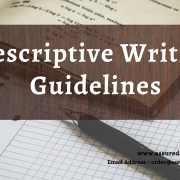Assessment weighting 100%
Module Learning Outcomes
By the end of this module students will be able to,
- Interpret and critically analyse sets of qualitative and quantitative data.
- Represent data sets graphically and interpret the meaning.
- Critique the use of data in public discourse.
- Write using an appropriate academic format including the use of Harvard style referencing.
Numbers and Quantitative Reasoning is assessed on a portfolio of two pieces of work;
Analysis of a dataset, and Critical Evaluation of a Published Work.
Both Assignment Part1 and Part 2 need to be submitted in the same file.
Portfolio Assignment Part 1
Analysis of a dataset
This brief concerns Analysis of a Dataset which contributes 50% of the module mark.
Quantitative reasoning is used in many areas of academic life. Your task is to analyse a small dataset, demonstrating your ability to reason with numbers and to present your findings effectively and persuasively.
Requirements:
- Download the dataset for UK Job Vacancies from:
https://www.ons.gov.uk/employmentandlabourmarket/peopleinwork/employmentandemployeetypes/timeseries/jp9z/unem/previous/v71 - We only want you to consider five years of data between Nov 2017 and Oct 2022
- Describe the relevant context for the data set selected
- Create at least one diagram from the data to represent the data visually. Do not copy or screenshot graphs from other sources.
- Suggest possible reasons for the variation within the overall population and/or how a particular variable (or variables) has (have) changed over time, and how you would go about confirming your hypothesis
- Use a modest amount of additional research to identify relevant secondary material to back up or refute the hypothesis
Guidance Notes:
- Word limit: 1000 +/- 10%
- Using your analysis of the data, present your findings on the topic of the question and do this right from the start of the work. We do not want a ‘balanced’ (on the one hand ‘X’, on the other hand ‘Y’) type answer. Rather we want to know what your position is, based on the evidence. In the process we want you to build an argument.
- You should complete some wider reading to support your answer using valid and reliable sources which must be fully cited in the body of your work and appear in the list of References
- Remember to submit your assignment on time.
Portfolio Assignment Part 2
Critical Evaluation of a Published Work
This brief concerns Critical Evaluation of a Published Work which contributes 50% of the module mark.
This assignment uses your numeracy skills and abilities in quantitative reasoning to critically evaluate one of the following editorial/opinion piece articles:
If you have previously submitted this assignment you must choose a different article to your previous submission.
Vidal, J., 2021. The plastic polluters won 2019 – and we’re running out of time to stop them. [online] theguardian.com. Available at:
<https://www.theguardian.com/environment/2020/jan/02/year-plastic-pollution-clean-beaches-seas> [Accessed 1 February 2021].
Wolf, M., 2022. The winding road to global recovery is through a thicket of risks. [online] Ft.com.
Available at: < https://www.ft.com/content/f681bdeb-f93a-4ec4-8356-77caf70f1c28> [Accessed 27 February 2022].
Marlow, B., 2022. Time is running out to prove Brexit is not a historic failure. [online]
Telegraph.co.uk. Available at: < https://www.telegraph.co.uk/business/2022/01/04/time-running-prove-brexit-not-historic-failure/> [Accessed 27 February 2022].
Requirements:
- Clearly identify the article selected and cite and provide a reference for the web link
- Describe the relevant context for the data set selected, what other numbers/facts could have been included and find alternative data to challenge the data given?
- Identify the article’s strengths and weaknesses as they pertain to quantitative reasoning (areas we have covered in the module)
- Critically discuss whether a different interpretation could be made and if the assumptions/predictions/inferences are reasonable or contain any bias
- Remember that this is an evaluation of the article, not the topic generally.
Guidance Notes:
- Word limit: 750 +/- 10%
- Present your evaluation of the article and its use of numbers. We do not want a ‘balanced’ (on the one hand ‘X’, on the other hand ‘Y’) type answer. Rather we want to know what your position is, based on the evidence. In the process we want you to build an argument.
- You should complete some wider reading to support your answer using valid and reliable sources which must be fully cited in the body of your work and appear in the list of References
- Remember to submit your assignment on time.
Marking and grading criteria
There are three areas that are considered when grading each part of the portfolio – Answering the brief, Presentation and Academic Practice, each contributing one-third of the marks.
Answering the brief – Task Fulfilment – Understanding and answering the question – Accuracy
- The extent to which requirements in the assignment brief have been fulfilled – see “Requirements” above
- Evidence to demonstrate that the purpose of the task has been fully understood
- The extent to which the information presented is free from factual errors and is based on useful, serious and pertinent examples
- The extent to which each element of the work is relevant, and the sources are appropriate and well-integrated
Presentation – Structure and Organisation – Argumentation and Critical Analysis – Grammar, Spelling and Flow – Academic Practice
- All appropriate sections (for example Introduction, main body, conclusion, appendices, and references) are present and appropriate in content
- The extent to which the work demonstrates coherent organisation of the material and presents an overall argument that proceeds logically to validate a thesis.
- Evidence of analysis and critical evaluation and quantitative / qualitative research.
- Grammar, spelling and prose
Academic Practice – Ideas – Sources – Referencing – Academic style
- Originality and substance of ideas and argument
- Thoroughness and extent of the use of the literature
- Clarity, accuracy, and sophistication of language
- Use of Harvard referencing style










